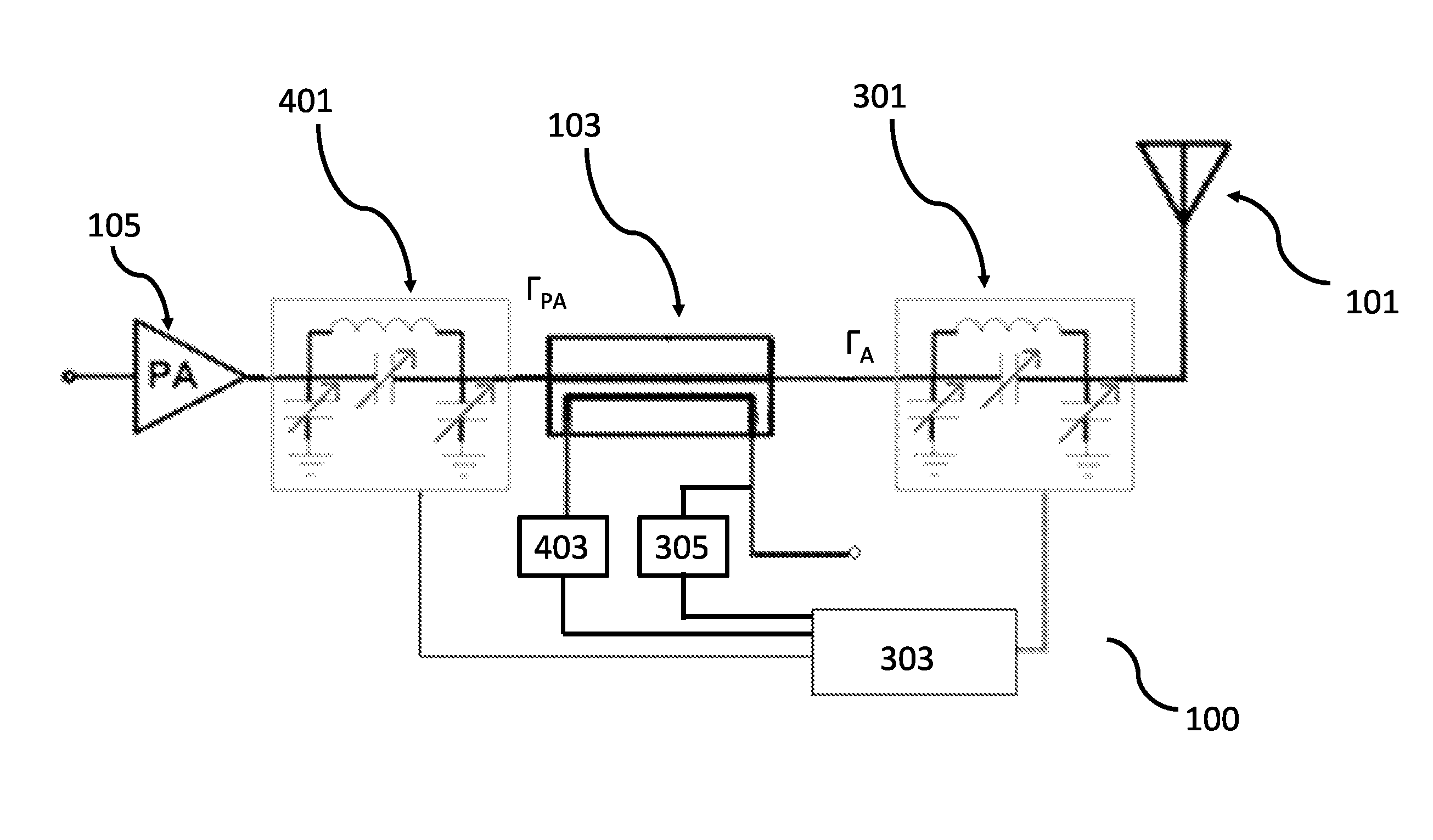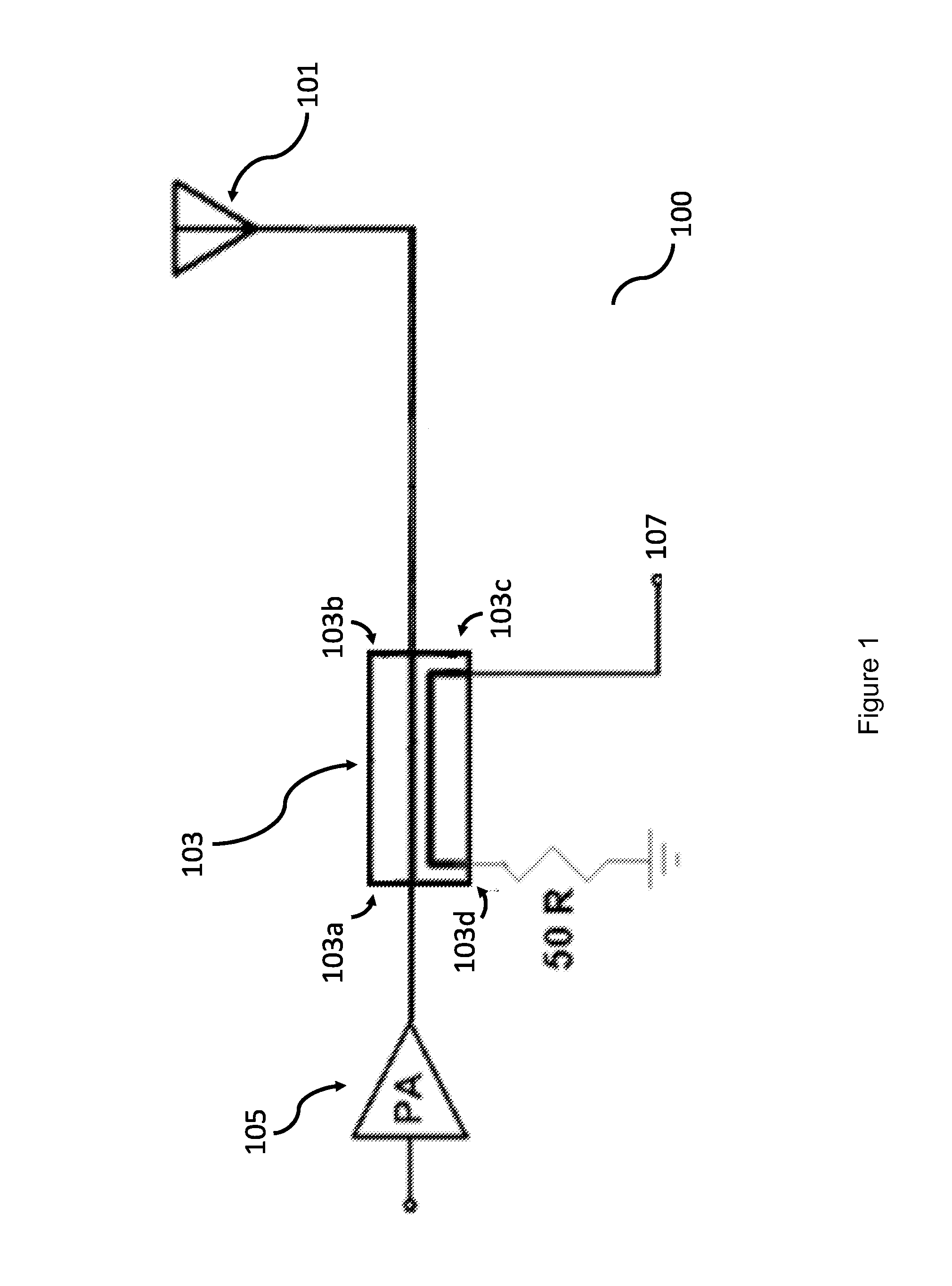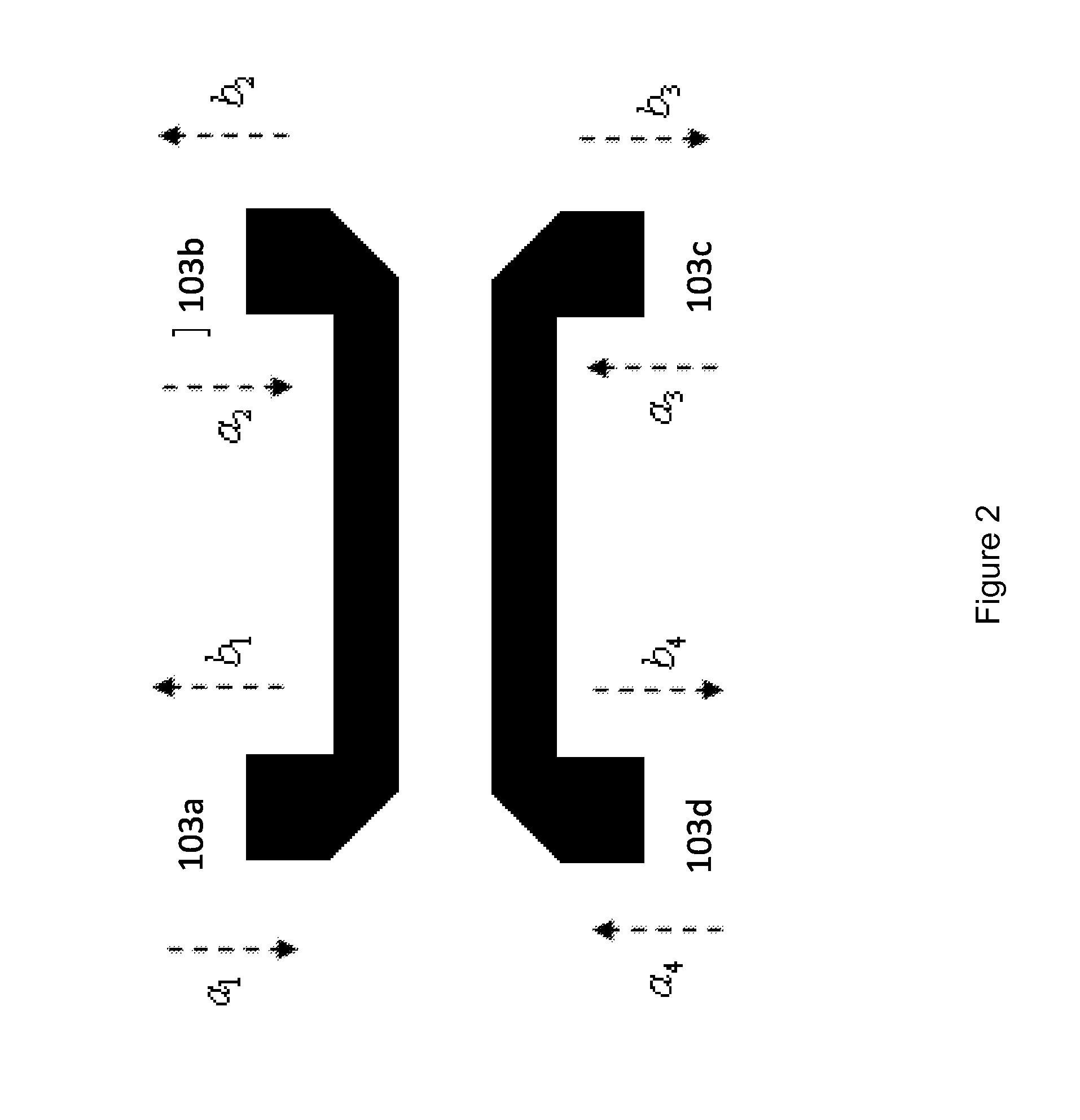Antenna circuit and a method of optimisation thereof
a technology of antenna circuit and antenna circuit, applied in the field of tunable antennae, can solve problems such as signal jamming, and achieve the effects of suppressing signal jamming, good transmission and reception signal isolation, and small magnitud
- Summary
- Abstract
- Description
- Claims
- Application Information
AI Technical Summary
Benefits of technology
Problems solved by technology
Method used
Image
Examples
Embodiment Construction
[0080]FIG. 1 shows an RFID antenna circuit 100 comprising an antenna 101 for sending out probing signals into the surroundings. Any RFID tag in the vicinity will reflect the signal back to the antenna 101 for identification. The antenna 101 is connected to a directional coupler 103 to isolate probing signals broadcasted from the antenna from reflected signals received by the antenna.
[0081]FIG. 2 show that a typical directional coupler 103 having port 1103a, port 2103b, port 3103c, and port 4103d.
[0082]Port 1 is known as the input port and is connected to a power source. Typically, signal is fed into port 1 from a power amplifier 105.
[0083]Port 2 is known as the output port and is connected to the antenna 101. Signal from the directional coupler 103 is transmitted from port 2 to the antenna 101 for broadcast.
[0084]Port 3 is known as the isolation port. Basically, the directional coupler 103 allows signals to travel bi-directionally. In one direction, a signal can travel directly fro...
PUM
 Login to View More
Login to View More Abstract
Description
Claims
Application Information
 Login to View More
Login to View More - R&D
- Intellectual Property
- Life Sciences
- Materials
- Tech Scout
- Unparalleled Data Quality
- Higher Quality Content
- 60% Fewer Hallucinations
Browse by: Latest US Patents, China's latest patents, Technical Efficacy Thesaurus, Application Domain, Technology Topic, Popular Technical Reports.
© 2025 PatSnap. All rights reserved.Legal|Privacy policy|Modern Slavery Act Transparency Statement|Sitemap|About US| Contact US: help@patsnap.com



